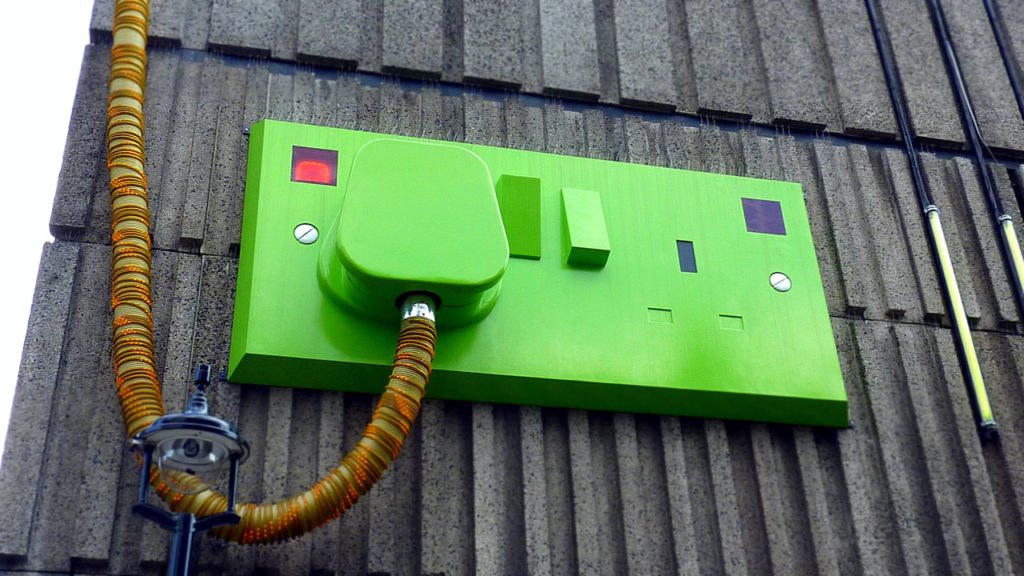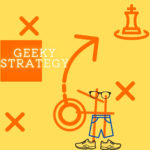To decarbonise all parts of the economy, lot of different energy sources are required. But many of them are intermittent. Hence storage is required. Batteries and hydrogen-producing electrolysers are the two important technologies in storage. So let us look at Hydrogen vs Battery Storage
Comparing the two technologies, Battery has been ahead as higher production volumes have reduced price of Li-ion batteries significantly. Electrolyser manufacturing is in early stages, so the cost reduction is anticipated. Both are similar in the sense that both have components such as electrolyte and membrane materials. Both battery and hydrogen technologies transform chemically stored energy into electrical energy and vice versa.
On average, 80% to 90% of the electricity used to charge the battery can be retrieved during the discharging process. For the combination of electrolyser and fuel cells, approximately 40% to 50% of the electricity used by the electrolyser for hydrogen production can be retrieved by the fuel cell as electricity.
In the mobility sector, battery storage currently has cost advantages and is much more common. Due to the long ranges required in heavy duty transport, the fuel cell will probably have advantages over the battery in this segment in the long term. In this market segment, the fuel-cell is considered to possess significant potential, based inter alia on the expectation of Total Cost of Ownership (TCO) cost parity between diesel and fuel-cell trucks by 2030.
In stationary use, large scale batteries are mainly used in the primary control energy market – also known as frequency containment reserve (FCR) – which needs to be activated within 30 seconds and operate for up to 15 minutes and represents the short-term response to imbalances in the grid – not by providing secondary or tertiary control energy. The application of stationary hydrogen technology at currently operational and announced projects is mainly focused on the generation of hydrogen as a fuel, as feedstock and for the injection into the existing gas grid. The fuel cell, which generates electricity and heat from hydrogen, is mostly used in stationary applications for decentralised cogeneration in heat and power supply, e.g. in the industry, and increasingly displaces diesel generators in backup power supply systems.
Now let us look at Hydrogen and batteries in a little detail
Hydrogen
Regarding hydrogen we focus on power-to-gas facilities (eletrolysers), which are used to produce green hydrogen, and on the fuel cell, which produces electrical energy from hydrogen.
Hydrogen fuel cells generate electricity by combining hydrogen and oxygen. Fuel cell facilities can produce hydrogen when electricity is cheap, and later use that hydrogen to generate electricity when it is needed (in most cases, the hydrogen is produced in one location, and used in another). Hydrogen fuel cells remain expensive (primarily because of their need for platinum, an expensive metal), and are currently being used as primary and backup power for many critical facilities.
Electrolyser production is still in its early stages. Europe, the world leader, has a manufacturing capacity of 1.2 gigawatts (GW) per year. Announced projects may bring the global installation of electrolyser capacity from 170 MW in 2019 to 730 MW in 2021 [IEA]. Less than 0.1% of global dedicated hydrogen production today comes from water electrolysis, with declining costs for renewable electricity, in particular from solar PV and wind, there is growing interest in electrolytic hydrogen.
Hydrogen has failed to live up to high expectations in the past, and there is no cast-iron guarantee that it will in the future. – IEA
Batteries
Lithium-ion Batteries
Lithium-ion batteries are by far the most popular battery storage option today and control more than 90 percent of the global grid battery storage market. Compared to other battery options, lithium-ion batteries have high energy density and are lightweight. The current Li-ion landscape is a mix of lithium nickel cobalt aluminium oxide (NCA), lithium nickel manganese cobalt oxide (NMC) and lithium iron phosphate (LFP) cathodes for Li-ion batteries, with the most common chemistry and an emerging dominant design being NMC blends. Around 60% of grid-scale batteries are currently nickel-manganese-cobalt blends – the technology of choice in EVs. EV battery manufacturers aim to continually develop greater energy density to reduce upfront costs and increase EV range, but this has little impact on stationary applications. Near-term developments already in the pipeline for current Li-ion technology are expected to reach cell-level energy densities of up to 325 Wh/kg and pack-level energy densities of 275 Wh/kg, both of which are close to the upper limits of current designs.
Note on Recycling
Demand for the materials used in electric vehicle batteries, in particular the availability and management of cobalt and lithium resources – has also become a central concern. In recycling terms, Li-ion can be a misnomer. Only a small proportion of a battery pack is made up by the active materials themselves, and of those a relatively small share are critical materials such as lithium and cobalt. In an NMC 622 battery, for instance, lithium is around 11% of the total cathode weight, while cobalt is around 18%.
Two mainstream recycling strategies are in use today. Pyrometallurgy (smelting) facilities use high-temperature processes to recover copper, nickel and cobalt. Organic compounds, plastics, as well as lithium and aluminium are not recoverable. Hydrometallurgic methods, also known as chemical leaching, are less capital- and energy-intensive, and are able to recover lithium, but can rely on large volumes of environmentally harmful chemicals in the leaching process.
Current recycling facilities using pyrometallurgy and hydrometallurgy can, depending on location, add a greenhouse gas footprint to an electric vehicle battery , compared with a battery manufactured from primary raw materials.
Lead-acid Batteries
Lead-acid batteries were among the first battery technologies used in energy storage. However, they are not popular for grid storage because of their low-energy density and short cycle and calendar life. They were commonly used for electric cars, but have recently been largely replaced with longer-lasting lithium-ion batteries.
Flow Batteries
Flow batteries have relatively low energy densities and have long life cycles, which makes them well-suited for supplying continuous power.
Although redox flow batteries fall within the category of electrochemical storage technologies, they differ from ordinary batteries in several ways. Instead of relying on electrodes made in a solid or immobilised form, redox flow batteries use porous electrodes, wherein the active materials are flown in the form of positive and negative liquid solutions containing redox-active species. These solutions are stored in two tanks, with each being circulated to one of the electrodes. During discharge, ions migrate from the negative electrode to the positive electrode through an ion-exchange membrane, while electrons flow from the negative solution to the negative electrode, and then through an external circuit to the positive electrode, and eventually to the positive solution.
Compared with Li-ion batteries, redox flow batteries can achieve lower degradation, improved safety and in particular can create almost unlimited longevity. The extent to which energy can be stored is determined by the volume of the tanks, which are easily scalable. Innovation in redox flow batteries has only recently become visible in patent applications. Redox flow batteries can have different chemistries, with vanadium the most commonly used redox-active cation.
Solid State Batteries
Solid-state batteries contain solid electrolytes which have higher energy densities and are much less prone to fires than liquid electrolytes, such as those found in lithium-ion batteries. Their smaller volumes and higher safety make solid-state batteries well suited for large-scale grid applications.
However, solid state battery technology is currently more expensive than lithium-ion battery technology. However, it is a major area of innovation today, with rising patenting activity revealing an emerging trend in the hunt for the next generation of Li-ion batteries.
Patenting activity in this area has been growing by 25% per year on average since 2010. Japan is the frontrunner in solid-state batteries, accounting for 54% of IPFs. The United States (18%) and European countries (12%) also performed better in this field, with equal or larger shares of IPFs in solid-state batteries than in all Li-ion overall. However, this was not the case for Korea and China, which hold relatively modest shares of IPFs in solid-state batteries (12% and 2%), despite accounting for 22% and 9%, respectively, of all IPFs related to Li-ion technology in 2014-2018.
Supercapacitors
Supercapacitors, also known as ultracapacitors, fall within the category of electrical storage, as they do not typically involve chemical reactions. Some of the key advantages of capacitors are that they can be charged and discharged within seconds and do not lose their storage capabilities over time. However, they cannot store electricity in quantities as large as batteries. This makes supercapacitors primarily suitable as a complement to batteries for applications that value bursts of power over the capacity of the storage medium. Supercapacitors are used in regenerative braking system in hybrid electric vehicle markets, as well as in wind power, solar power, trains and aircrafts.
Where’s Innovation taking place ?
Of the top ten global applicants behind international patent families (IPFs) related to batteries, nine are based in Asia. They include seven Japanese companies, led by Panasonic and Toyota, and two Korean companies, Samsung and LG Electronics. Bosch, a German company, is the only non-Asian applicant to feature in the ranking. From 2014-2018, Japan alone was home to the inventors of 41% of all Li-ion patenting activity.
China is leading in manufacturing. With 1.1 million cars, Chinese sales accounted for 50% of the global market in 2019. BYD, a battery and electric vehicle manufacturer, is the leading global producer of electric buses and sells a similar number of electric cars to Tesla.
Japan’s leadership in battery technology has not translated into a large domestic electric car market, representing just 2% of the global market in 2019, The Republic of Korea has a similar electric car market, but is a leader in stationary batteries for utility-scale power grid services and behind-the-meter applications in buildings.








